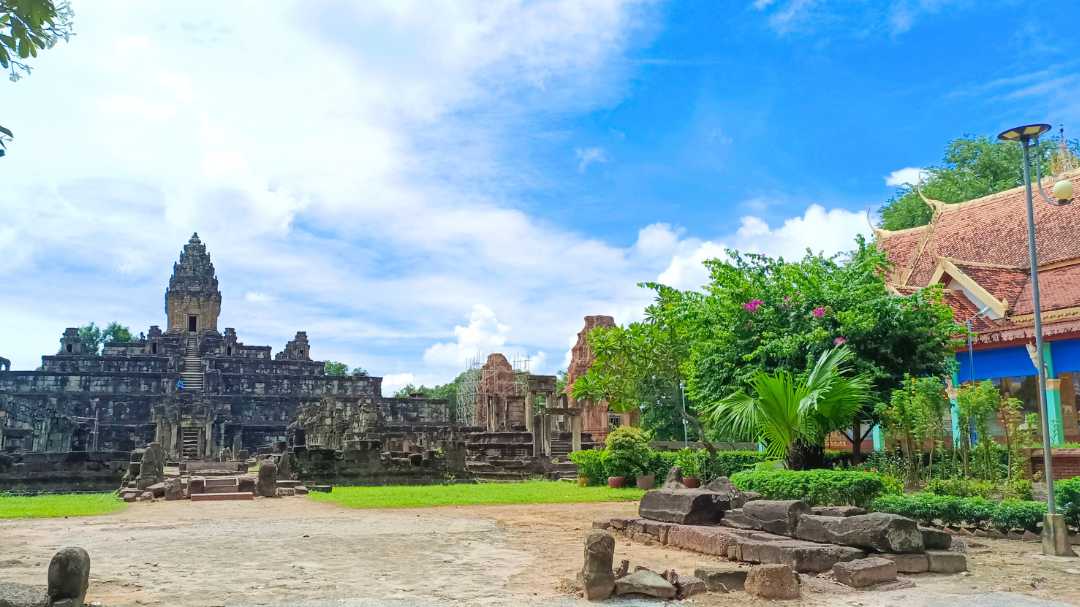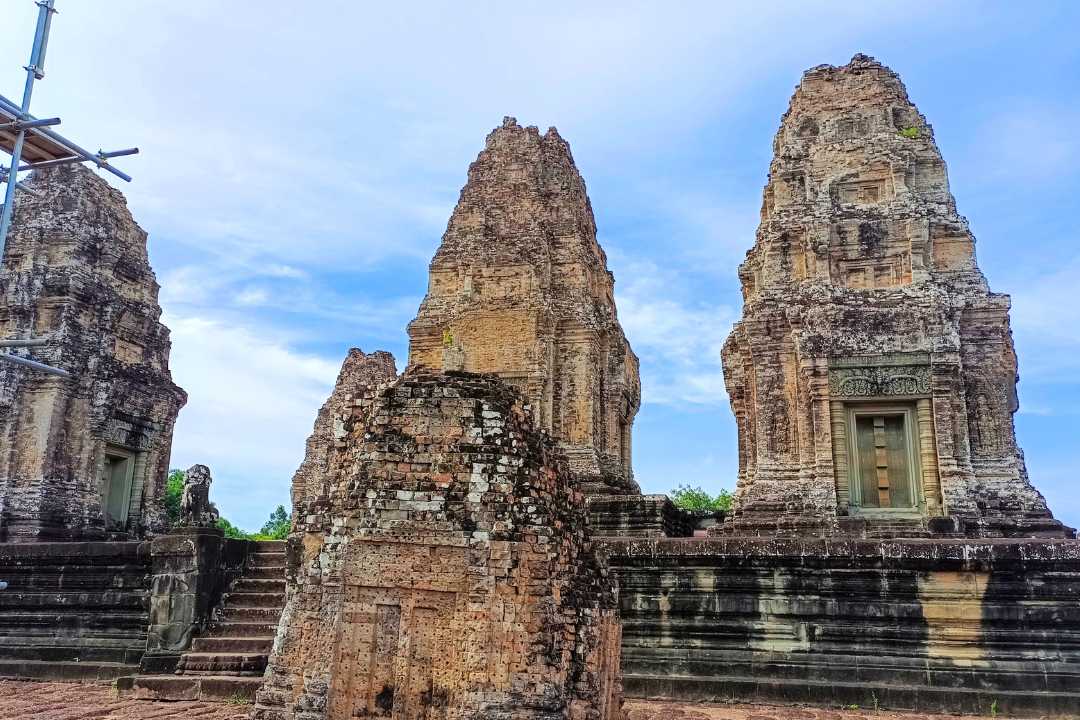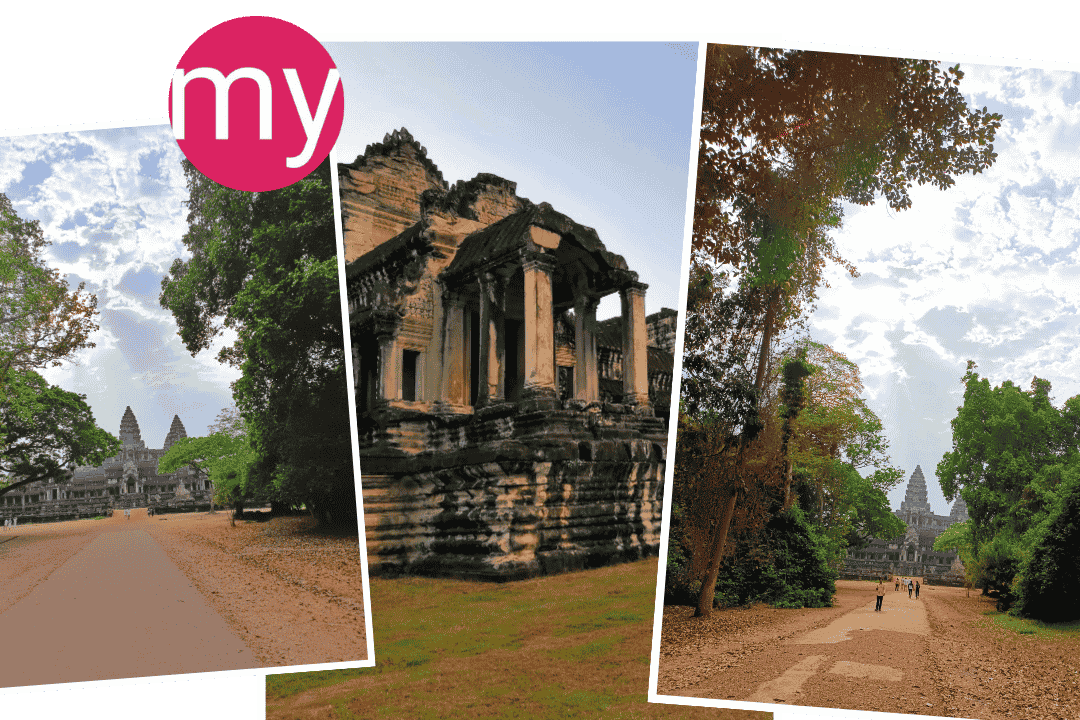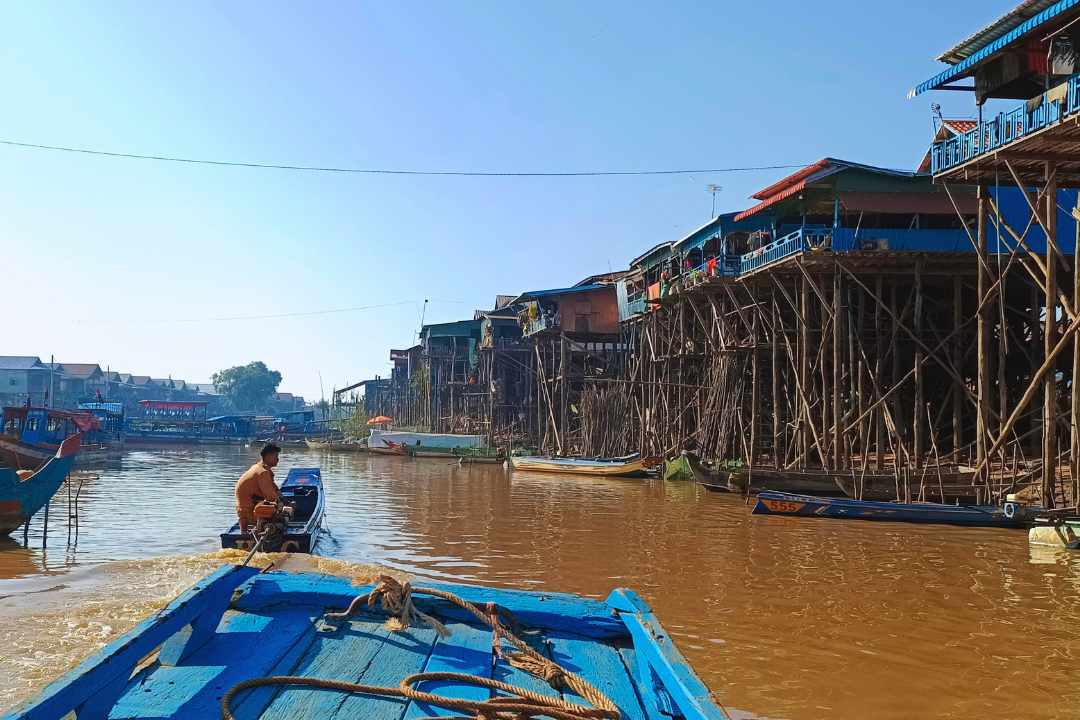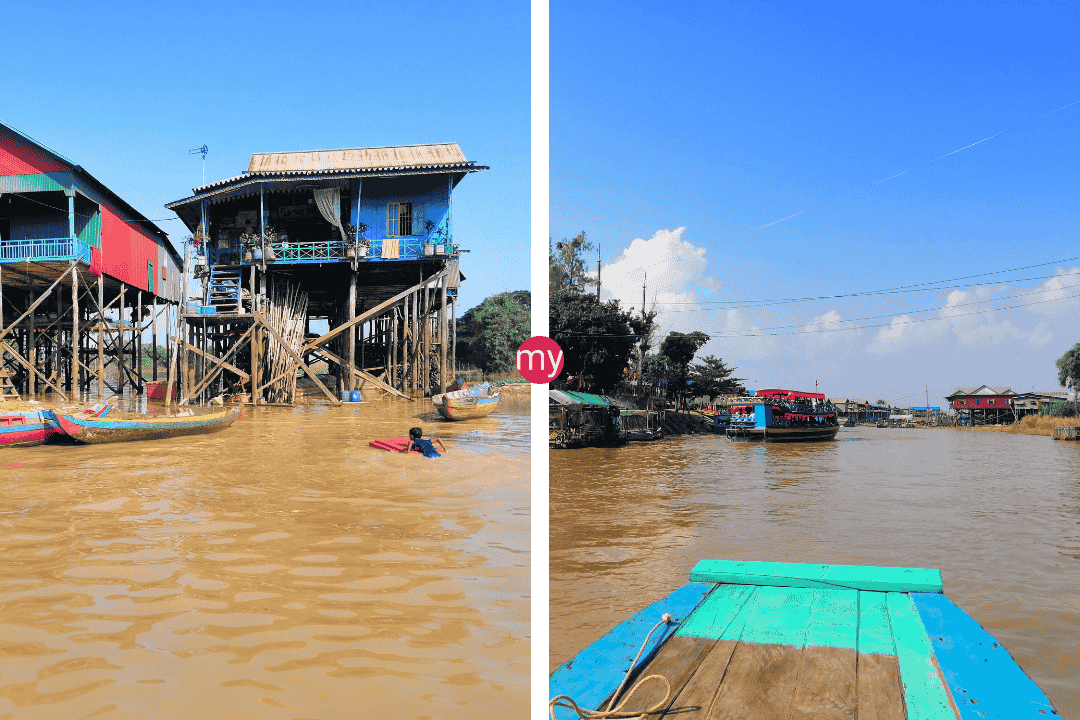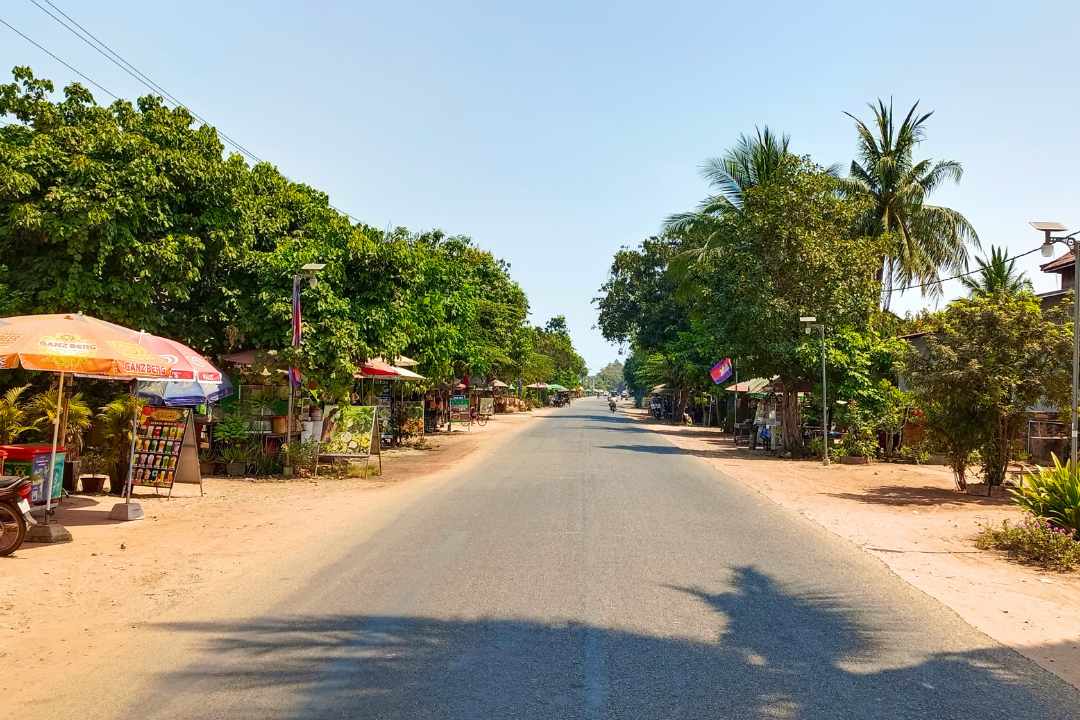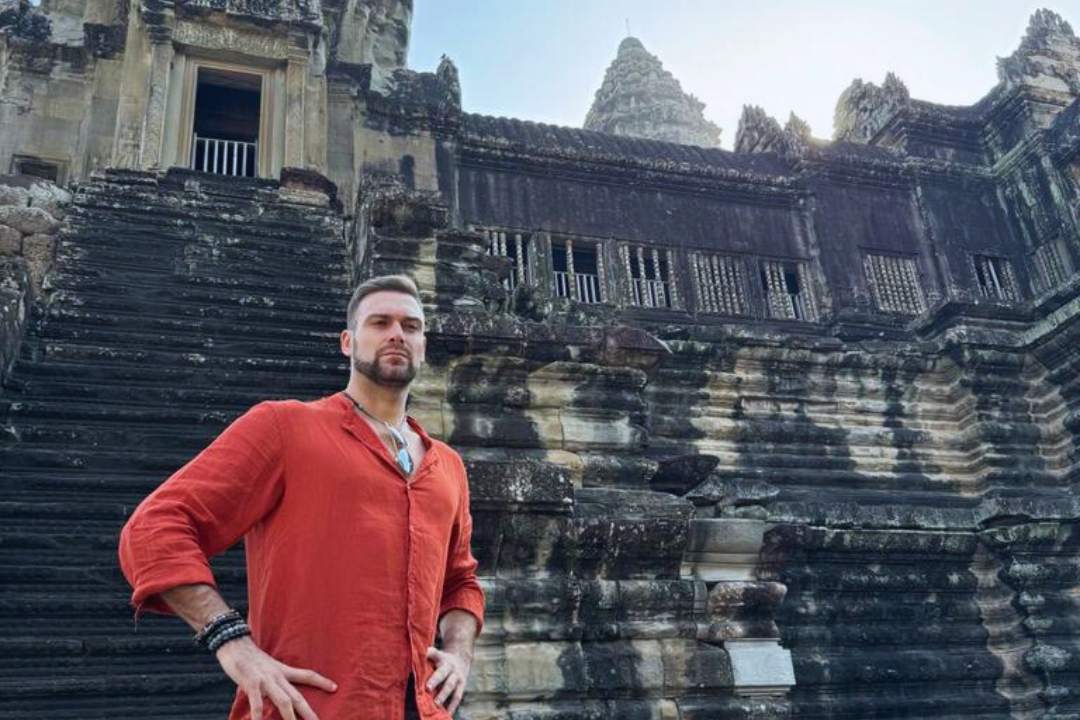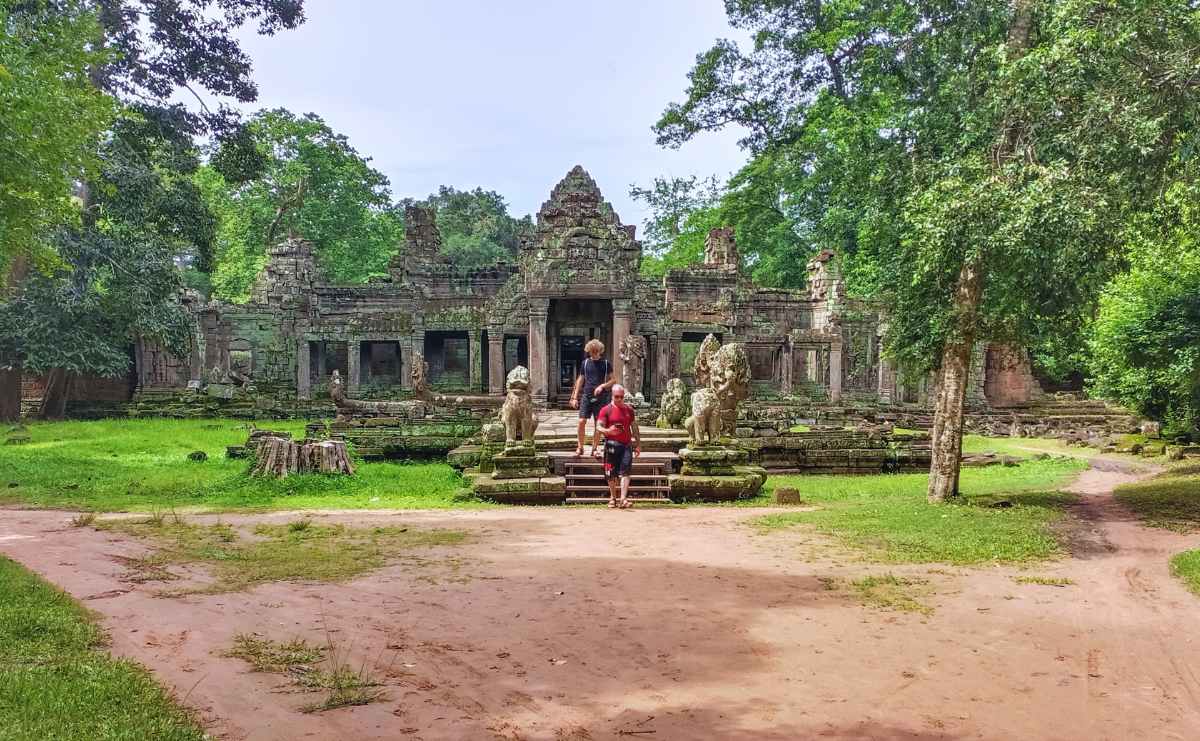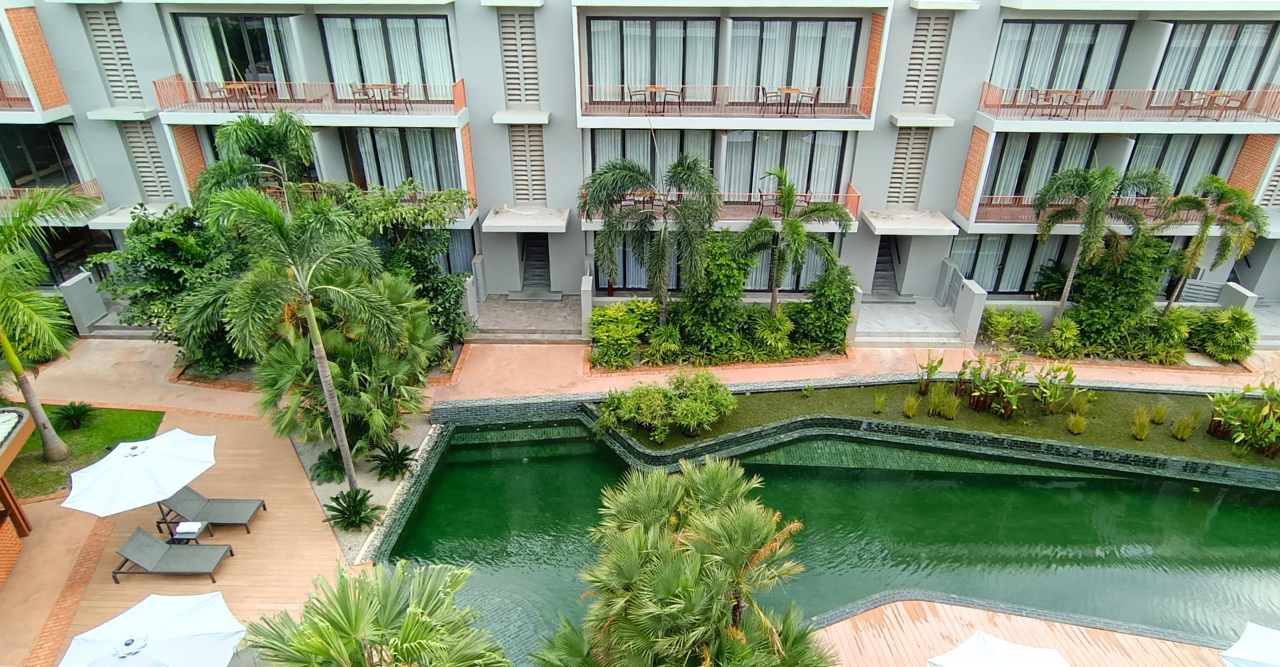Koh Ker Temple in Cambodia - The Mystery Pyramid You Need to See
The Secret Temple That Tourists Miss But Locals Love
Deep in Cambodia’s jungle sits a massive stone pyramid that few tourists know about. Koh Ker temple stood as a royal capital 1,000 years ago. Now it waits for brave travelers who want to see something amazing beyond Angkor Wat.
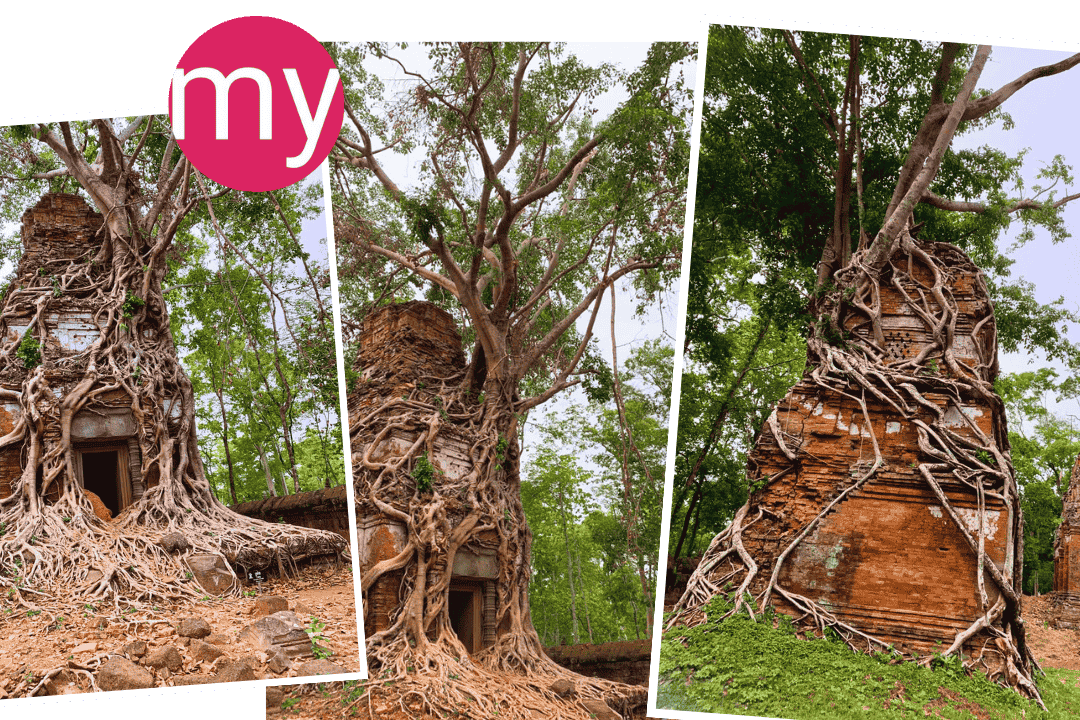
Koh Ker Temple in Cambodia: The Jungle Pyramid You Must See in 2025
Koh Ker temple in Cambodia stands as a powerful reminder of the once-mighty Khmer Empire, yet it remains in the shadow of its famous cousin, Angkor Wat. This stone giant is quickly becoming the must-see spot for travelers who want to go beyond the typical tourist path.
10 Amazing Facts About Koh Ker Temple You Need to Know
- A pyramid that rivals those in Mexico
Koh Ker’s main temple rises 36 meters high with seven clear steps. Most Cambodian temples spread out flat, but this one shoots up toward the sky. When you climb to the top, you’ll see jungle for miles around. - It was Cambodia’s capital for just 16 years
King Jayavarman IV moved his court here from 928-944 CE. This short but busy time left us with about 40 temples built fast. The king died and his son soon moved back to Angkor, leaving these buildings in the forest. - UNESCO just added it to their famous list
In 2023, Koh Ker joined the World Heritage List. This big honor means more money for fixing old stones and better signs for tourists. Visitor counts jumped 71% after this news broke. - It’s safer now than ever before
For years, Koh Ker was too risky to visit because of land mines from Cambodia’s war times. Teams cleared these dangers away, so now paths are safe. This work helps both tourists and local farmers who grow rice nearby. - The style looks different from Angkor Wat
Art from Koh Ker shows stronger, more muscular figures than the soft, smiling faces at Angkor. Stone lions seem to growl, and guards look fierce. Many fine statues ended up in world museums. - A visit costs just $15
While Angkor park charges $37 for one day, Koh Ker asks only $15 per person. This small fee helps save these old stones for future visitors. You’ll need a separate ticket from your Angkor pass. - Trees grow through the temples
At Prasat Pram, huge trees wrap roots around and through old stones. Unlike Ta Prohm at Angkor (where they clear many trees), Koh Ker keeps its wild feel. This makes great photos but also risks to the buildings. - The site holds 180+ temples
Most tours show about 24 main temples, but the whole site has close to 180 more buildings still partly buried in dirt and plants. Future digs will bring more rooms to light. The site covers 81 square kilometers! - Morning visits give the best photos
Early light makes the red sandstone glow. Most tours reach the site by 10 AM, when sun angles work great for pictures. The pyramid casts long shadows across the grounds in late day. - It combines well with Beng Mealea
Smart tourists visit both Koh Ker and Beng Mealea in one day. Beng Mealea sits halfway back to Siem Reap and shows what Angkor might look like without all the cleanup work. The two make a perfect day trip.
Why Koh Ker Temple in Cambodia Should Top Your Travel List
Far from the crowds that swarm Angkor Wat, Koh Ker temple in Cambodia offers something truly special – a chance to feel like an explorer stepping back in time. This ancient city served as the Khmer capital from 928-944 CE under King Jayavarman IV, who left behind a stunning collection of temples deep in the jungle. At the heart of this complex rises a magnificent seven-tiered pyramid known as Prasat Thom, standing 36 meters tall.
Time to break down those 10 standout reasons why this spot’s gaining traction fast on Cambodia’s tourism map.
1. Koh Ker temple was a royal capital – but only for 16 years
When Jayavarman IV took control of the Khmer Empire, he made the bold choice to move his capital from Angkor to Koh Ker temple in Cambodia. For 16 short years, this remote site buzzed with royal activity. Workers built close to 40 major structures here, including temples, barays (water reservoirs), and living quarters. After Jayavarman IV died, his son Harshavarman II ruled briefly before power shifted back to Angkor in 944 CE.
The short but intense period of royal attention created a unique building style. Structures at Koh Ker tend to be larger and bolder than those from the same time at Angkor. Stone carvings show powerful, muscular figures rather than the more refined style found elsewhere. This “Koh Ker style” stands out in the history of Khmer architecture.
2. Koh Ker pyramid temple will take your breath away
The centerpiece of Koh Ker temple in Cambodia is Prasat Thom, a massive seven-tiered pyramid that looks more like something from Central America than Southeast Asia. Unlike most Khmer temples that spread horizontally, this one shoots skyward in dramatic fashion. Visitors can climb to the top using wooden stairs built along one side, rewarding them with amazing jungle views.
This pyramid temple likely represented Mount Meru, the sacred mountain in Hindu cosmology where gods were thought to live. At its peak once stood a massive stone lingam, a symbol of the god Shiva, showing the site’s dedication to Siva worship. The unique design makes this structure unlike any other in Cambodia.
3. UNESCO just added it to the World Heritage List
In September 2023, Koh Ker temple in Cambodia joined the prestigious UNESCO World Heritage List, becoming Cambodia’s fourth World Heritage site. This official recognition highlights the site’s unique cultural and historical value. The listing calls it “Koh Ker: Archaeological Site of Ancient Lingapura or Chok Gargyar,” using both its Sanskrit and Khmer historical names.
This UNESCO status brings increased protection and attention to the site, as well as more tourism. Visitor numbers have already jumped 71% since the listing. For travelers, this means now is the perfect time to visit – famous enough to have improved access, but not yet overrun with crowds.
4. Koh Ker temple is hiding in the jungle, waiting to be explored
Unlike the well-manicured grounds of Angkor, many structures at Koh Ker temple in Cambodia remain partially embraced by jungle. As you wander between temples, you’ll feel like an explorer making fresh discoveries. At Prasat Pram, five towers emerge from the forest floor, with tree roots dramatically wrapping around and through the ancient stones.
The remote temple complex spreads across 81 square kilometers, with approximately 180 sanctuaries scattered throughout. Only about 24 structures are fully cleared and accessible to visitors. The rest remain partially buried, some still waiting to be fully mapped and studied. This gives Koh Ker temple in Cambodia an authentic, untamed quality that’s increasingly rare in popular tourist destinations.
5. It was dangerous to visit Koh Ker temple until recently
For decades after Cambodia’s civil war, Koh Ker temple in Cambodia remained off-limits to visitors due to landmines scattered throughout the area. Extensive clearing operations have now made the main temple area and pathways safe, but some remote sections of the archaeological zone remain restricted.
This troubled recent history helps explain why the site stayed under the tourist radar for so long. While Angkor Wat became world-famous in the 1990s, Koh Ker remained largely inaccessible until the early 2000s. Even now, with improved roads and safety, it sees just a fraction of the visitors that flock to Angkor.
Editor’s Note: Most tourists miss this place while rushing through Angkor Wat. That’s their loss. Go now before everyone finds out about it. This might be the last year you can have this wonder almost to yourself.
6. It contains unique water engineering marvels
The ancient Khmers were master water engineers, and Koh Ker temple in Cambodia showcases their skills. The massive Rahal Baray, a rectangular reservoir measuring approximately 1,200 by 560 meters, anchors the site. This enormous water tank stored water during the rainy season for use during dry months.
Recent archaeological surveys have identified 209 human-made ponds throughout the complex, revealing a sophisticated water management system that supported thousands of residents. This engineering helped make Lingaparvata (another name for Koh Ker) a sustainable city despite its remote jungle location.
7. Archaeologists are still making discoveries here
Unlike Angkor, which has been studied for over a century, serious archaeological work at Koh Ker temple in Cambodia remains in its early stages. Researchers continue to make exciting discoveries about this mysterious capital. In 2018, a groundbreaking study challenged the traditional narrative that Koh Ker was abandoned after 944 CE. Evidence now suggests the site continued to be occupied and developed long after the royal court returned to Angkor.
Japanese researchers recently uncovered ancient kilns at the site, showing it was a production center for ceramics. Each year, new findings add pieces to the puzzle of Cambodian archaeology at Koh Ker, making it an active research site rather than just a tourist destination.
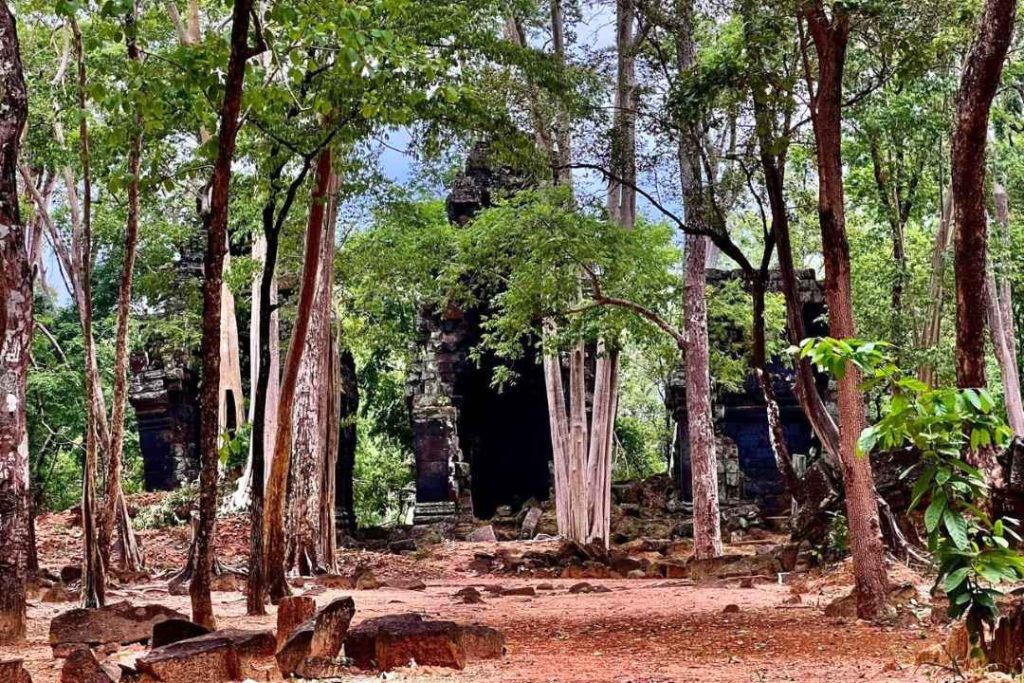
8. Koh Ker temple’s art has a distinctive powerful style
The sculptures and carvings created during Koh Ker’s brief period as capital display a unique artistic style. Compared to the refined, elegant figures found at Angkor, Koh Ker’s statues appear more muscular, powerful, and dynamic. Art historians recognize the “Koh Ker style” as a distinctive phase in the evolution of Khmer art during the Angkorian period.
Sadly, many exceptional sculptures from Koh Ker temple in Cambodia were looted during Cambodia’s periods of unrest. Some have been recovered and returned in recent years, but others remain in museums and private collections worldwide. The distinctive style makes these pieces easily identifiable to experts.
9. You can visit as a day trip from Siem Reap
Despite its remote location, Koh Ker temple in Cambodia is accessible as a day trip from Siem Reap, the gateway city to Angkor Wat. The journey takes about 2.5 hours each way on roads that have dramatically improved in recent years. Most visitors combine Koh Ker with a stop at Beng Mealea, another jungle temple, creating a full day of exploration beyond the main Angkor complex.
Tour companies like MySiemReapTours offer guided excursions that include transportation, knowledgeable guides, and all entrance fees. These tours typically depart early morning and return by evening, allowing you to sleep in the comfort of Siem Reap while still experiencing these remote wonders.
10. Koh Ker temple gets far fewer visitors than Angkor Wat
While Angkor Wat receives millions of visitors annually, Koh Ker temple in Cambodia sees just a fraction of that number. Recent statistics show approximately 105,000 yearly visitors to Koh Ker, compared to nearly 2.5 million at Angkor before the pandemic. This difference means you’ll often find yourself alone among the ruins, creating a magical atmosphere that’s increasingly rare at major archaeological sites.
The relative lack of crowds allows for better photography, deeper connection with the site, and more personalized attention from guides. For travelers seeking authentic experiences away from mass tourism, Koh Ker offers the perfect balance of accessibility and exclusivity.
How to Experience Koh Ker Temple in Cambodia
Ready to explore this amazing site for yourself? Here’s everything you need to know about visiting Koh Ker temple in Cambodia:
Getting There
Most visitors reach Koh Ker as a day trip from Siem Reap. The drive takes approximately 2.5 hours each way on mostly paved roads. Options include:
- Guided Tour: The easiest and most informative option. Companies like MySiemReapTours offer day trips that include transportation, guide services, entrance fees, and often lunch.
- Private Car: Hiring a car with driver costs around $60-100 USD for the day, plus entrance fees. Your hotel in Siem Reap can arrange this.
- Motorbike: Adventurous travelers can rent motorbikes in Siem Reap, but the long distance and remote location make this challenging for those unfamiliar with Cambodian roads.
Many tours combine Koh Ker with Beng Mealea temple, which lies roughly halfway between Siem Reap and Koh Ker. This combination makes for a perfect day of “jungle temple” exploration beyond the main Angkor complex.
Entrance Fees and Tickets
Koh Ker requires a separate ticket from the Angkor Archaeological Park:
- Koh Ker entrance fee: $15 USD per person
- Tickets are purchased at the entrance to the site
- Official tickets are managed by Angkor Enterprise, the government body that oversees temple tourism
Unlike Angkor, which offers 1-day, 3-day, and 7-day passes, Koh Ker currently only offers single-day access. Keep your ticket with you while exploring, as guards may check it at different temples within the complex.
Best Time to Visit Koh Ker Temple
Consider these factors when planning your visit to Koh Ker temple in Cambodia:
- Season: The dry season (November-April) offers easier walking conditions and clearer skies for photography. The rainy season (May-October) brings lush greenery but can make paths muddy and some temples harder to access.
- Time of Day: Morning visits (8-11 AM) provide the best light for photography and cooler temperatures for climbing the pyramid. The site is generally quieter in the afternoon.
- Length of Stay: Most visitors spend 2-3 hours exploring the main temples. If you’re combining with Beng Mealea, plan for a full day (7 AM to 6 PM) including travel time from Siem Reap.
For the ultimate experience, consider visiting during shoulder seasons (November or April) when weather remains good but tourist numbers are lower.
What to Bring
Pack these essentials for a comfortable visit to Koh Ker temple in Cambodia:
- Water: Bring plenty, as the site has limited facilities
- Sun Protection: Hat, sunscreen, and sunglasses
- Insect Repellent: Especially during rainy season
- Comfortable Shoes: You’ll be walking on uneven ground
- Camera: With extra batteries or power bank
- Cash: For entrance fees, snacks, and souvenirs
- Light Rain Jacket: During rainy season
Most tours provide water, but it’s always good to bring extra, especially if you plan to climb the pyramid in the heat.
Must-See Temples at Koh Ker
While there are nearly 180 structures at the site, most visitors focus on these highlights:
- Prasat Thom: The magnificent seven-tiered pyramid that defines the site. Climb to the top for spectacular views across the jungle canopy.
- Prasat Pram: Five towers partially strangled by massive tree roots, creating some of the most photogenic scenes at Koh Ker.
- Prasat Krachap: A fascinating temple with a long causeway and beautiful stone carvings.
- Prasat Neang Khmau: Known as the “Temple of the Black Lady,” featuring dark stone different from other structures.
- Prasat Bram: A group of five towers arranged in a quincunx pattern, representing the five peaks of Mount Meru in Hindu cosmology.
Most guided tours include these key structures while providing historical context and pointing out easily missed details.
Experience the Magic with Our Expert-Led Tour
At MySiemReapTours, we’ve crafted the perfect day trip to Koh Ker temple in Cambodia. Our Koh Ker and Beng Mealea guided tour combines these two remarkable jungle temples into an unforgettable experience far from the crowds of Angkor.
What Makes Our Tour Special
- Small Groups: We limit tours to just 10 people, ensuring personal attention and a peaceful temple experience.
- Expert Local Guides: Our English-speaking guides share fascinating stories and historical context you won’t find in guidebooks.
- Comfortable Transportation: Travel in our air-conditioned vehicles with free WiFi and cold water.
- All-Inclusive: Entrance fees, lunch at a local restaurant, and hotel pickup/drop-off are included.
- Perfect Timing: We schedule visits to avoid peak hours, giving you more tranquil temple experiences.
Our guests consistently praise the way our guides bring these ancient ruins to life through their knowledge of 10th century temples and the religious practices of the Hindu sanctuary that once thrived here.
Visit Koh Ker Temple in Cambodia Before Everyone Else Does!
As word spreads about this magnificent jungle pyramid, visitor numbers to Koh Ker temple in Cambodia continue to rise. The recent UNESCO World Heritage designation has already increased interest, with tourism growing over 70% in just one year. Now is the perfect time to visit – before it joins the ranks of must-see destinations on every traveler’s list.
Our Koh Ker and Beng Mealea guided tour offers the ideal way to experience these remarkable sites with expert guidance and comfortable transportation. Don’t leave Cambodia without seeing what many consider to be its most atmospheric and authentic ancient ruins.
Ready to plan your adventure to Koh Ker temple in Cambodia?
Contact us today to secure your spot or ask any questions about this unforgettable experience. Our team is ready to help you create memories that will last a lifetime in the magical temples of Cambodia.
Resources for Temple Lovers
Here are some valuable resources to learn more about Koh Ker temple in Cambodia and plan your visit:
- “Ancient Angkor” by Claude Jacques – The definitive guidebook to Khmer temples, including detailed information on Koh Ker’s history and architecture.
- Angkor Enterprise – Official information about temple passes, opening hours, and regulations.
These resources will help you prepare for an amazing temple adventure in Cambodia!
Brought to you by Dan and Mat, Your tour planners.
Featured
Explore more on My Siem Reap Tours
Koh Ker and Beng Mealea guided tour | Banteay Srei temple guided tour | Angkor Wat Sunrise tour | Private Angkor Wat Sunset Tour | Koh Ker and Beng Mealea guided tour | Morning Siem Reap floating village tour | Afternoon Siem Reap floating village tour | Private Angkor Wat special tour | Kulen Waterfall small group guided Tour | Private Angkor Wat mix temples photo tour

